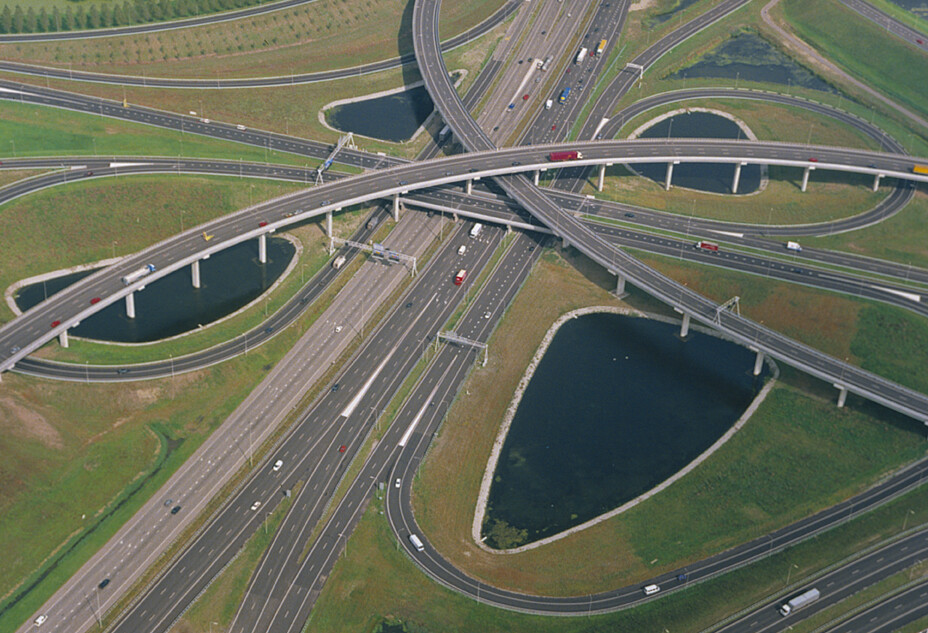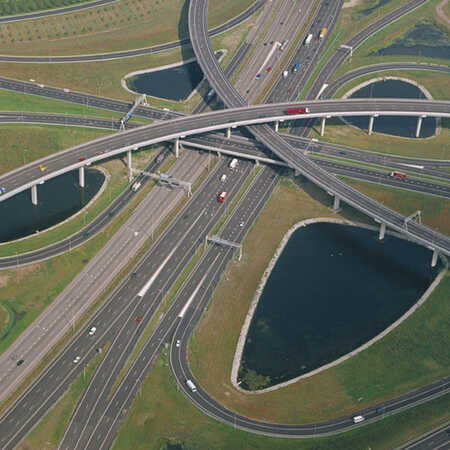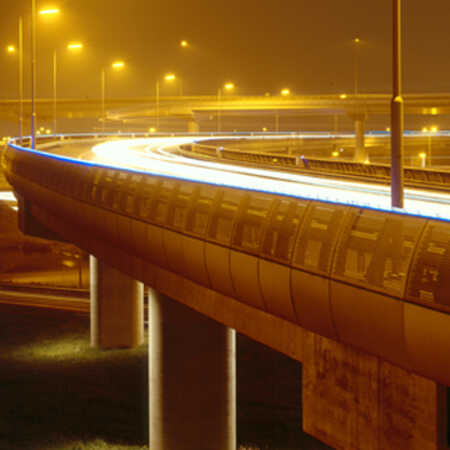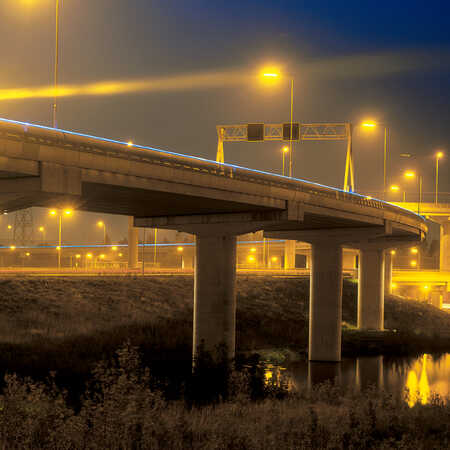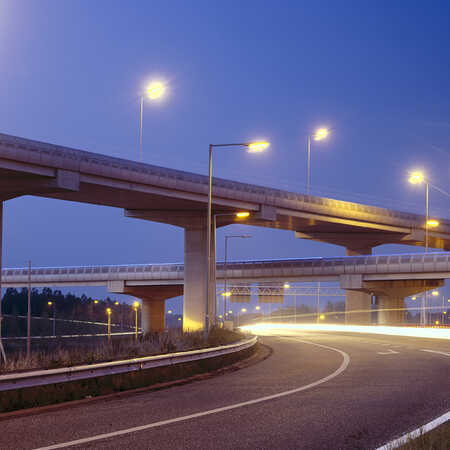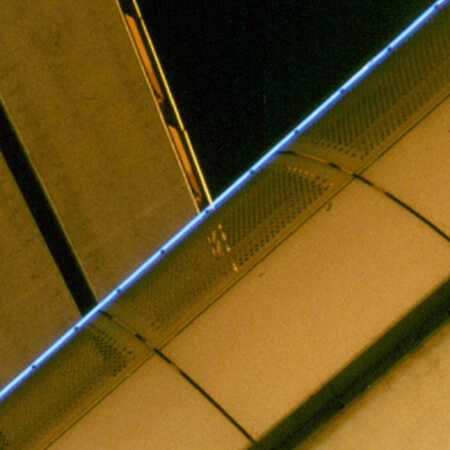082.04
Additions to the ‘Ridderster’ Intersection
Two big flyovers had to be added to the existing Ridderkerk intersection. In consultation with Rijkswaterstaat (the Directorate-General of Public Works and Water Management) the brief was extended and a concept was developed for the intersection as a whole, for both the new and existing viaducts. The aim of this study was to find a solution for the wish to unify the whole ‘Ridderster’ intersection as much as possible.
The new civil construction uses prefabricated curved box girders that follow the curvature of the roadway. The use of straight girders would have resulted in a restless appearance with facetted surfaces instead of the flowing line that is visible now.
The attachment of these girders to the columns required an unusual joint structure, because the prefab girder is set at a different angle for each column. The difference is caused by the degree to which the viaduct is angled in the curves of the road, the ‘tilt’ of the road deck. A column that tapers towards the top was designed in order to reflect these differences visually.
A new parapet was designed for both the new and the existing viaducts. The parapets were designed as long, continuous ribbons. The safety railings on the old viaducts have been replaced as well, in order to reinforce the unity of the road intersection.
The new parapet is constructed from convex, curved profiles of stainless steel. The lower section covers the edge of the concrete viaduct, while the upper section serves as a safety rail above the road deck. The top section of the parapet is perforated. The perforation is almost invisible from a distance, but from close up the motorist passing by in a car has an uninterrupted view through the perforated stainless steel panels.
Lines of lights have been mounted on the parapets of some of the junction’s viaducts, making it recognizable at night as well. This proposal was prompted by an earlier study into RotterdamÂ’s Ruit (literally the ‘Diamond’), the network of urban motorways serving Rotterdam. One of the proposals was to introduce lines of lights on the viaducts which effectively embrace Rotterdam. The Ridderkerk intersection is the first junction where these proposals to introduce some unity in the ringroad around Rotterdam have actually been realized.
The colour of the light lines, which are made of fibre-optic cable, can be altered with filters. Normally their colour is blue, but this can be altered for special occasions. For example, to mark Queen’s Day celebrations, the profile of the intersection could be illuminated in orange light.
Awards
Nomination: 7 Piramides 2000
Related
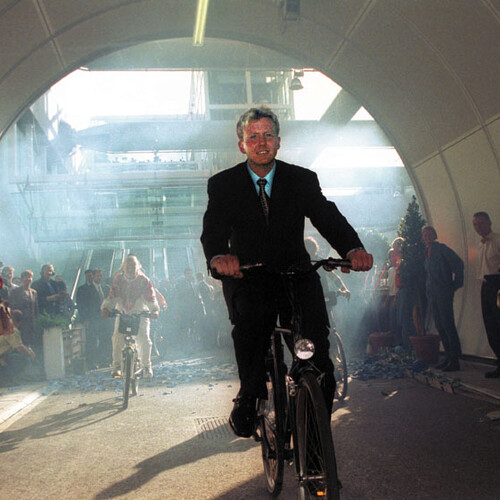
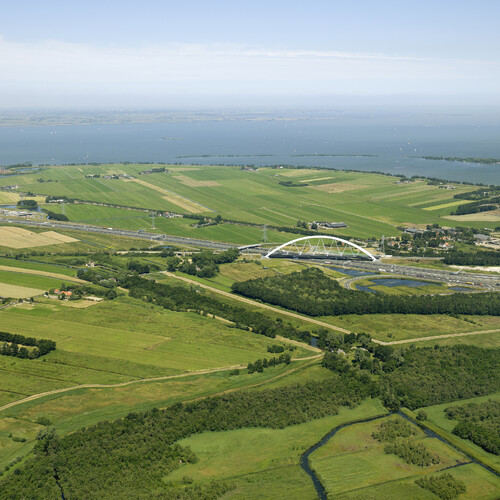
Road expansion A1/A6 Diemen – Almere Havendreef
Between Amsterdam and Almere
It seems an odd question: is it possible to drastically improve the infrastructure of the northern part of the Randstad, between Diemen and…
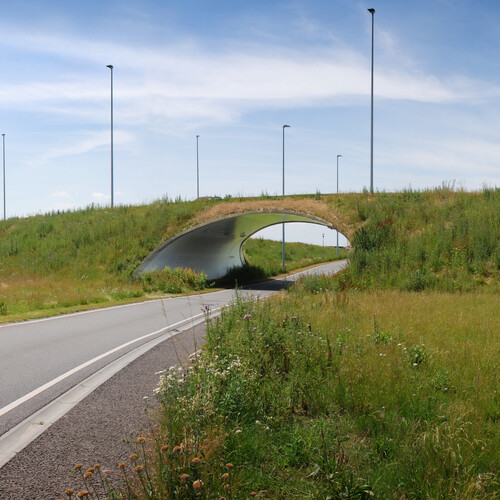
Tunnel near Eindhoven
For a crossing on business park Meerhoven, close to Eindhoven, a small tunnel has been designed.

